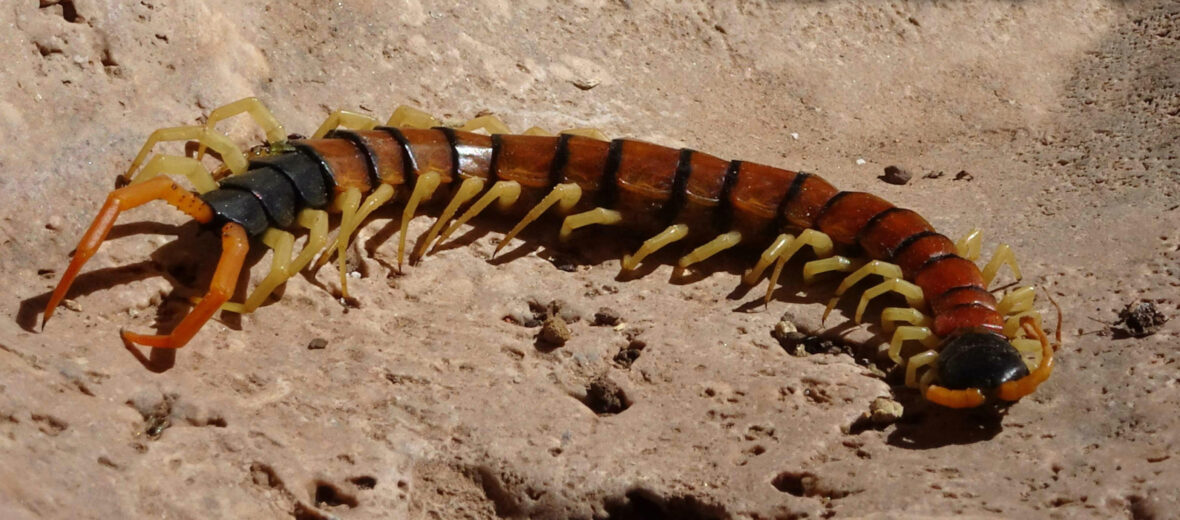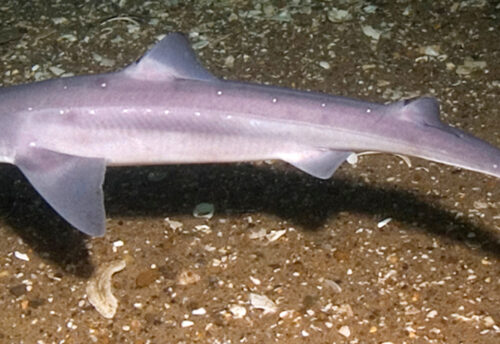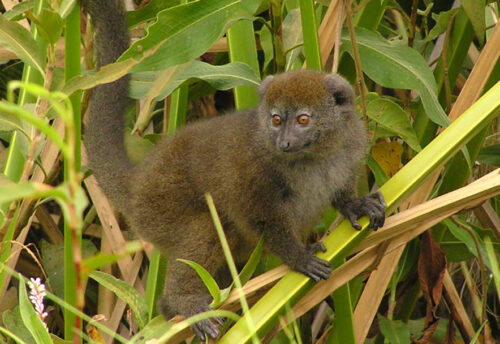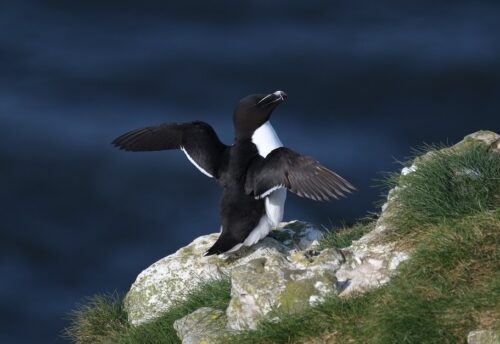
Aggressive, fast, and typically angry, it’s the Arizona giant centipede. There are 2 known types of centipedes living in the Sonoran Desert. One is the common desert centipede and the other is the giant desert centipede. Centipedes usually live in tropical regions, but they also live in deserts, and beach environments. Centipedes are found under rocks, bark, logs, crevices, leaf litter, and soil. I have not yet met one that didn’t seem to be a bit on the aggressive side. The other fun things about them are that it’s tough to tell which end is the business end and even if you grab them by the tail end, they can still whip around and deliver their telltale bite. Welcome to Arizona, where, like Australia, there are many critters that would like to kill you.
First the Stats…
Scientific name: Scolopendra heros
Length: Up to 8 inches
Leg count: Up to 23 pairs
Lifespan: Up to 5 years
Now on to the Facts!
1.) Centipedes have devices called gnathosomes or gnathopods to inject venom into their prey for self defense and hunting. These are a pair of pincer-like appendages in front of the legs. Even though the back of a centipede also looks formidable.
2.) They prey on insects, lizards, frogs, birds, and even rodents.
3.) Owls, coyotes, bobcats, badgers, ringtail cats, and the local exterminator all want to kill and or eat these critters.
4.) Their aposematic (warning) colors advertise their toxicity.
5.) Arizona giant centipedes are nocturnal (active at night).
But wait, there’s more on Arizona giant centipede!
6.) Giant centipedes are venomous and pack a wallop of a bite.
7.) A bite from one of these bad boys causes excruciating pain and eventual numbness at the bite site that can last for over 5 hours!
Did you know…?
The giant centipede’s venom acts as a cytolysin, damaging cellular membranes and rupturing cells. It also acts as a neurological agent that causes a type of paralysis in smaller prey, and a numbing in humans and larger prey.
8.) Females watch over their eggs by coiling around them and groom them to keep fungus & mold away. They also keep predators away till the eggs hatch.
Now a Short Arizona Giant Centipede Video!
Also, check out the Critter Science YouTube channel. Videos added frequently!
Want to suggest a critter for me to write about? Let me know here.



